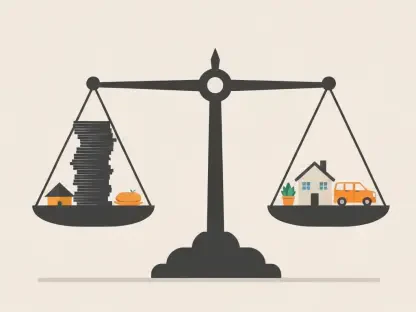The landscape of financial services is undergoing a transformative shift towards more integrated and customer-friendly solutions, driven by the advent of open banking and pay-by-bank methods. Although these innovations have yet to fully mature in the U.S., recent developments, particularly in the regulatory sphere, indicate a promising future. These advancements are poised to fundamentally alter how consumers and businesses interact with financial systems, making transactions more seamless, secure, and efficient. The momentum is being fueled by both technological innovations and evolving consumer expectations, setting the stage for widespread adoption.
The Regulatory Landscape: Catalyst for Change
Recent actions by regulatory bodies are setting the stage for broader adoption of open banking in the U.S. The issuance of Rule 1033 by the Consumer Financial Protection Bureau (CFPB) on October 22 marks a significant milestone. This final draft answers several longstanding questions about data sharing, liability, and compliance. Regulatory clarity is crucial for banks and financial institutions, which require well-defined guidelines to navigate the complexities of data transparency and real-time payment solutions. As such, Rule 1033 is widely seen as a foundational step toward a more integrated financial ecosystem.
Plaid and AWS, key industry players, argue that regulations provide the necessary framework for secure and efficient financial data exchanges. With Rule 1033, banks and financial institutions now have clearer guidelines, promoting enhanced data transparency and real-time payment solutions. However, the regulatory environment still leaves some ambiguities, particularly regarding implementation and compliance. These uncertainties need to be addressed for these technologies to realize their full potential. The U.K.’s experience with open banking since 2017 shows that consumer expectations have evolved significantly, demanding more seamless and secure financial services. With Rule 1033 acting as a regulatory catalyst, the U.S. market is poised to follow suit, aiming for similar advancements and consumer satisfaction levels.
Consumer Behavior and Evolving Expectations
In the years since open banking was mandated in the U.K., consumer behavior has shifted noticeably. U.S. consumers are beginning to mirror these expectations, seeking more integrated and user-centric financial services. This shift from traditional data-sharing methods to more sophisticated pay-by-bank options is evident. Consumers now prioritize convenience and security in their financial transactions. The demand for streamlined payment methods and enhanced digital interfaces is growing. Real-time payments and simplified authentication processes are no longer just add-ons but essential features.
Merchants and financial institutions must respond to these evolving expectations by offering seamless and secure experiences. The ability to integrate pay-by-bank solutions into existing systems without major overhauls becomes a pivotal factor. Meeting customer needs effectively will be crucial for gaining a competitive advantage. This alignment between consumer expectations and technological capabilities is likely to drive rapid adoption. The companies that can offer the most seamless, efficient, and secure payment experiences will be the ones that succeed in this new landscape. Therefore, investment in user experience and robust security measures are not just beneficial but essential for staying competitive.
Technological Innovations Driving Adoption
Technological advancements play a crucial role in the adoption of open banking and pay-by-bank solutions. Companies like Plaid and AWS are leveraging state-of-the-art technologies such as machine learning and centralized data lakes. These innovations are instrumental in enhancing both the functionality and security of these financial services. Advanced technologies facilitate real-time data processing and analytics, enabling faster and more efficient transactions. This capability not only improves the user experience but also provides financial institutions with valuable insights into consumer behavior and transaction patterns, thereby enhancing service delivery.
User experience is significantly improved through the implementation of biometric authentication and enhanced digital interfaces. These features not only streamline the payment process but also build consumer trust. The integration of such sophisticated technologies ensures that users have seamless, secure, and quick access to financial services. Moreover, these technological advancements facilitate better data management and transparency, which are vital for real-time payments. Financial institutions that invest in modernizing their technology stacks are more likely to thrive in the evolving landscape of open banking and pay-by-bank solutions. This modernization is not just a matter of upgrading systems but also involves adopting a more agile and responsive approach to technology deployment and management.
Challenges and Opportunities: Building Trust and Driving Adoption
Despite the promising advancements, several challenges remain in the path to widespread adoption of pay-by-bank methods. Consumer trust is paramount for the widespread adoption of pay-by-bank methods. Security concerns and unfamiliarity with new technologies can act as significant barriers. Building trust requires robust security measures that ensure the safety of financial data. Companies must also provide clear, user-friendly information about the benefits and functionalities of these new payment methods. Educating consumers can go a long way in alleviating concerns and fostering acceptance.
Incentives are another powerful tool to drive adoption. Offering instant cash-back rewards or merchant-driven incentives can attract consumers, particularly younger generations. Aligning these incentives with existing consumer behaviors can effectively encourage the transition to new payment technologies. As consumers become more familiar with these options and experience their benefits firsthand, adoption rates are likely to increase. Additionally, collaboration between financial institutions, merchants, and technology providers is essential for creating a cohesive and supportive ecosystem. This synergy can help address any teething issues and ensure that the transition to these new payment methods is as smooth as possible.
Operational and Infrastructure Needs
To support the burgeoning open banking and pay-by-bank solutions, financial institutions must modernize their operational infrastructures. Real-time payments and data transparency demand advanced technological frameworks and efficient data management systems. Financial institutions need turnkey solutions that allow for the smooth integration of pay-by-bank methods into their existing systems. The ability to transition without extensive system overhauls is crucial for both banks and merchants. Investing in scalable and flexible technology platforms can facilitate this integration, ensuring seamless operations.
Successful implementation also requires collaboration between financial institutions, technology providers, and regulatory bodies. Such collaborations can ensure that the necessary infrastructure and compliance requirements are met, paving the way for widespread adoption and operational efficiency. This collaborative approach can also help in addressing any unforeseen challenges that may arise during the implementation phase. Financial inclusivity and the broader reach of banking services could become a reality if these collaborations are executed effectively. The goal is to create a more integrated and transparent financial system that benefits all stakeholders, from consumers to financial institutions and regulators.
A Unified Path Forward
The financial services landscape is evolving, moving towards more integrated and consumer-friendly solutions. This shift is primarily driven by the emergence of open banking and pay-by-bank methods. Though these innovations are not yet fully developed in the U.S., recent regulatory changes signify a promising future. These advancements are set to revolutionize the way consumers and businesses engage with financial systems. Transactions are becoming increasingly seamless, secure, and efficient due to these emerging technologies. The driving force behind this change is a combination of technological advancements and shifting consumer expectations. Both factors are working together to create a favorable environment for the widespread adoption of these new banking methods. This evolving ecosystem is expected to offer improved financial interactions, catering to the growing demand for more streamlined, transparent, and user-friendly financial services. The future looks bright as these innovations gain momentum, promising a more efficient and interconnected financial landscape.









